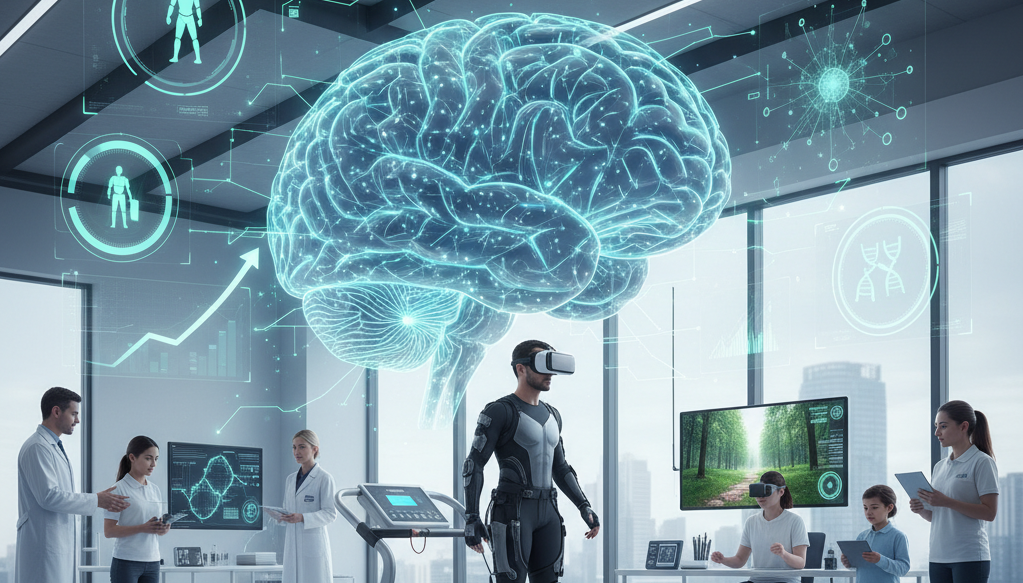Neurological disorders and injuries, ranging from stroke and traumatic brain injuries to spinal cord damage, affect millions of people worldwide each year. Historically, rehabilitation for these conditions often relied on standardized exercises and long-term therapy regimens. However, modern neurological rehabilitation has evolved significantly, integrating cutting-edge technologies, personalized care strategies, and holistic approaches that improve patient outcomes and quality of life. In this article, we explore the latest trends and outcomes shaping neurological rehabilitation today.
Personalized Rehabilitation Plans
One of the most notable trends in neurological rehabilitation is the shift toward individualized treatment plans. Instead of a one-size-fits-all approach, clinicians now tailor therapy programs based on a patient’s specific condition, medical history, and functional goals. This personalization ensures that interventions are both efficient and effective, targeting the areas most likely to yield measurable improvements.
Advanced assessment tools, including functional MRI and neurocognitive testing, allow therapists to understand the unique needs of each patient. By leveraging these insights, rehabilitation specialists can optimize therapy sessions and track progress in real time, significantly enhancing recovery potential. Institutions like Neulife Rehab Louisiana exemplify this patient-centered approach, combining clinical expertise with individualized care to maximize outcomes.
Integration of Technology
Technological innovation has revolutionized neurological rehabilitation. Robotics, virtual reality (VR), and wearable devices now play a critical role in helping patients regain mobility, coordination, and cognitive function. Robotic exoskeletons, for instance, assist patients in practicing repetitive movements safely, supporting motor recovery after spinal cord injuries or strokes.
Virtual reality platforms create immersive environments where patients can perform therapeutic exercises in engaging, game-like scenarios. This approach not only motivates participation but also accelerates neuroplasticity—the brain’s ability to reorganize itself after injury. Wearable sensors further complement rehabilitation by providing continuous feedback on movement quality, balance, and gait, allowing therapists to fine-tune interventions dynamically.
Holistic and Multidisciplinary Approaches
Modern rehabilitation emphasizes holistic care that addresses both physical and psychological aspects of recovery. Neurological injuries often have profound emotional and cognitive effects, including anxiety, depression, and impaired memory. A multidisciplinary team—comprising neurologists, physiotherapists, occupational therapists, speech-language pathologists, and psychologists—ensures that every dimension of a patient’s recovery is addressed.
Cognitive rehabilitation, mindfulness techniques, and adaptive therapies are increasingly integrated into traditional physical rehabilitation programs. These interventions not only promote neurological recovery but also improve overall well-being, helping patients regain independence and confidence in daily activities.
Evidence-Based Functional Therapies
Evidence-based practices remain the cornerstone of successful rehabilitation. Therapies grounded in rigorous research demonstrate measurable improvements in motor function, speech, and cognition. Constraint-induced movement therapy (CIMT), task-specific training, and neurodevelopmental techniques are examples of interventions with proven efficacy.
Functional rehabilitation also focuses on real-world outcomes rather than isolated metrics. For example, therapy might prioritize the ability to prepare meals, navigate public spaces, or return to work, ensuring that gains in the clinic translate to meaningful improvements in daily life. Studies consistently show that combining functional training with modern technologies enhances recovery trajectories, particularly when initiated early in the rehabilitation process.
Tele-Rehabilitation and Accessibility
Access to quality neurological rehabilitation can be challenging, particularly for patients in rural or underserved areas. Tele-rehabilitation has emerged as a valuable tool to bridge this gap. By leveraging secure video conferencing, remote monitoring, and digital exercise platforms, therapists can deliver personalized care to patients in the comfort of their homes.
Tele-rehabilitation also enables continuous engagement, allowing clinicians to adjust programs in response to real-time progress data. For patients with mobility limitations or transportation barriers, this approach increases adherence to therapy and promotes more consistent recovery outcomes.
Conclusion
The landscape of neurological rehabilitation is rapidly advancing, driven by technology, personalized care, and a holistic understanding of patient needs. By integrating evidence-based therapies, multidisciplinary collaboration, and innovative tools, modern rehabilitation programs offer new hope for patients seeking to regain function and independence.









